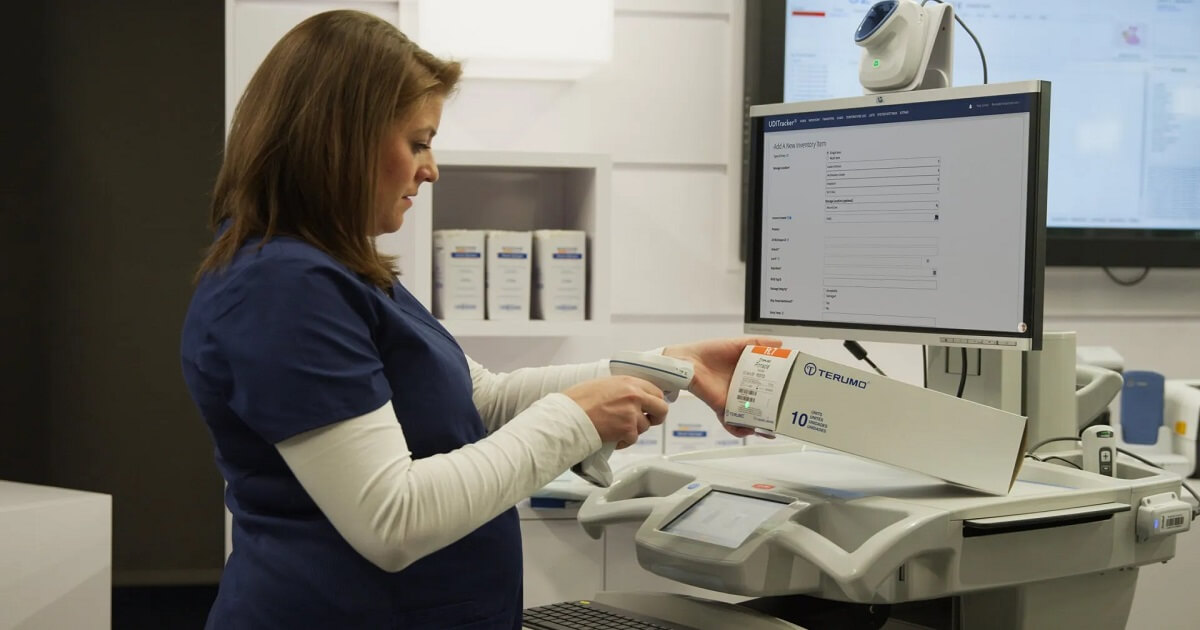Last Updated on April 20, 2024 by Saira Farman
In simple terms, a barcode is a set of specific lines that represent a series of numbers. Each item sold in the store has its own unique product code. By scanning this code with a Barcode Reader, the item can be identified in the store’s electronic point-of-sale (EPOS) inventory system. The barcode was first patented in 1951 by American inventors Norman Joseph Woodland and Bernard Silver. Barcodes are based on Morse code, originally known as “bolls”. Although they initially attracted little commercial interest, barcodes became popular in the 1970s when supermarket chains began using them in their checkout systems. While there are many different types of barcodes, most products use a Universal Product Code (UPC). The Universal Product Code (UPC) is the most common barcode and consists of lines representing numbers with a product code printed underneath.
What is a Barcode Reader
Simply put, a Barcode Reader (also known as a barcode scanner) is an electronic device that scans, decodes, and captures the information represented by a barcode. Most barcodes will also contain a product code in case employees need to actually enter the number. While UPC is the most basic barcode, there are many different types. These include barcodes that contain lines that can represent symbols and numbers as well as numbers. The most common variant of the UPC is the 2D barcode. 2D barcodes can contain more information than traditional UPC codes and are most commonly found on self-printing postage stamps. Another great example of a 2D barcode is the QR code that can be found on restaurant menus and check-in labels since the start of the COVID-19 pandemic. As useful as barcodes are, they’re really useless if we can’t read them. Fortunately, the technology we need to decode them is readily available in the form of barcode readers. Typically, barcode readers include:
- Light Source – This barcode lights up so it can be read.
- Lens – This is the part that reads the code.
- Photoconductor – After the code is read, the photoconductor converts the optical information into an electrical signal.
- Decoder – The decoder interprets the electrical signal and sends the information from the reader’s output port to a working EPOS system.
Everyone who has ever bought something in a store has at some point interacted with a barcode scanner. There are many different types of barcode readers, depending on the industry and business needs. While they work the same way, they are physically very different. These include:
- Handheld Readers – These are the most commonly used readers. Depending on business needs, it can be wired or wireless.
- Laptop – These wireless readers include a built-in microcomputer that processes the codes in one device.
- Presentation – A hands-free scanner typically used to quickly scan multiple items.
- Over the Counter – Much like a demo scanner, but set up at a kiosk or counter.
- Fixed Mount – These readers use sensors to scan codes as items pass in front of them. It is often found in factories and machining centers.
- Wearables – reading devices worn on the body. It is usually attached to the finger or arm.
- Mobile phone – a relatively new invention. These are phones that scan codes using a camera and a barcode reader app.
How Do Barcode Readers Work
For most people, a Barcode Reader is a very simple technology to operate. Still, the way readers work is actually quite complicated. We’ll try to keep things simple when explaining how it works.
The process of scanning a barcode with a barcode reader can be divided into five steps:
- The reader shines a light source (usually an LED or laser) onto the barcode.
- The light is reflected back into the device and captured by specialized components. This is why barcodes are black and white, as these are the least reflective and most reflective colors respectively.
- The reflected light creates intermittent pulses as the reader moves along the barcode.
- This pulse is interpreted by the reader and converted into a number.
- These numbers are then entered into a computer connected to the scanner and matched with the corresponding items.
This seemingly simple process makes both business and customer experience very easy. Making transactions and tracking inventory management is easier than ever thanks to barcodes.
EPOS is As Easy Scanning a Barcode
Behind every great Barcode Reader is a great EPOS system. Epos Now complete solutions provide everything you need to keep your business thriving.
With Epos Now You Will be Able to:
- View profitability reports based on individual product performance, top items, best and worst sellers, and employee sales
- View sales analysis for profit margins, cash flow, and other expenses
- Access an award-winning inventory management system that syncs online and in-person sales for up-to-date stock levels
- Automatically buy stocks so you never miss a sell
- Create and send invoices using simple templates and a built-in VAT calculator
- The customer management system can save customer contact information and shopping preferences for more targeted marketing.
- Schedule emails and texts during the most impactful times of the day
- Integrate with business automation applications that are right for your business
- Simplify workforce management to improve scheduling and payroll efficiency
- If you want to know more about Epos Now, please contact our team today.
Also Read: Tech Store







